-

Jun
12
Interpretive Summary: Circulating microRNAs associated with immune competence in Angus cattle
6e470c4d-ea9f-44a9-930b-0fbc61d1fc58.png?sfvrsn=37aa5ad1_1)
Immune competence is a measurable trait that was developed to determine the ability of animals to respond to an infection. This trait involves measuring the response to vaccination and has been used in cattle selective breeding programs to ensure that animals maintain an effective ability to control disease, improving animal outcomes and productivity.
Read more
-

Jun
12
Interpretive Summary: Effects of clodronate disodium on endocrine regulators of calcium in yearling horses
73642652-8d76-44e9-a398-1f90d2855ed6.png?sfvrsn=6eaa5ad1_1)
Despite limited scientific understanding of the impacts on juvenile horses, extra-label use of bisphosphonates is anecdotally reported to be widespread. This study was conducted to determine the effects of clodronate disodium (CD), a specific bisphosphonate, on hormones associated with blood calcium regulation.
Read more
-

Jun
12
Interpretive Summary: Impact of initial postweaning feed intake on weanling piglet metabolism, gut health, and immunity
86e239b6-ca01-461c-a3d6-c70bbf165dc4.png?sfvrsn=a6ab5ad1_1)
Individual feed intake observed during the first week postweaning influenced intestinal development and physiology. Weanling pigs were classified as high or low eaters during the first 3 d after weaning and subsequently split into high and low eaters from days 4 to 6, hence, forming four patterns. Overall, piglets with higher feed intake presented a reduced metabolic stress and an activated immune system.
Read more
-

Jun
05
Interpretive Summary: Opportunities to improve environmental sustainability of pork production through genetics
228a8972-e365-4ec2-92ff-0f17570289d2.png?sfvrsn=50895ad1_1)
By increasing productivity and feed efficiency, genetic improvement has led to substantial reductions in the carbon footprint of pork production over the past decades. This review concludes that, other than continuing and accelerating genetic improvement for productivity and efficiency, opportunities to further enhance reductions in the carbon footprint of pork production through genetics are limited when based on traits that are currently routinely collected in breeding programs.
Read more
-

Jun
05
Interpretive Summary: Technologies and practices to improve feed and nutrient utilization by pigs
4ee63245-a545-4702-b6bf-0d65db9b7808.png?sfvrsn=73895ad1_1)
Improving feed and nutrient utilization of pigs will play a crucial role in helping lead the shift towards increased sustainability in pork production. Nutritional practices such as precision feeding, use of enzymes and feed additives, physical and thermal processing of diets, and reduction in feed wastage, coupled with genetic, health, and barn management improvements, can reduce the environmental impact of pork production.
Read more
-

Jun
05
Interpretive Summary: Piglet birth weight but not the timing of zinc supplementation in gestation diets affects tissue mineral concentrations and gene expression
7d50df99-ecaa-40f4-93cb-dbd6ea773488.png?sfvrsn=928a5ad1_1)
This research was designed to identify periods during gestation for feeding high zinc that would improve piglet survival and to elucidate how high maternal zinc feeding affects sow and piglet trace mineral levels and gene expression in piglets. Thirty sows were assigned to treatments (10 sows per treatment): 1) Control—sows fed a corn–soybean meal-based diet containing 206 ppm total supplemental zinc; 2) Breed-to-Farrow—as Control + 147 ppm supplemental Zn from 5 days post-breeding to farrowing; and 3) Day 110-to-Farrow—as Control + 4,079 ppm supplemental Zn starting on day 110 of gestation until farrowing.
Read more
-

Jun
05
Interpretive Summary: Effects of corn protein inclusion on apparent total tract macronutrient digestibility, palatability, and fecal characteristics, microbiota, and metabolites of healthy adult dogs
fe5eb54e-e9b0-4e8c-ba70-bb2c5de41825.png?sfvrsn=ad8a5ad1_1)
Corn protein (CP), a co-product of the corn ethanol industry, was evaluated as a protein source in dog foods. The study goals were to determine how CP inclusion affected the apparent total tract digestibility (ATTD) and palatability of dog foods and the health markers of dogs consuming them.
Read more
-

Jun
05
Interpretive Summary: Heat abatement during the pre-weaning period: effects on the nasal microbiota of Holstein male calves
f8be4390-5c60-47f5-9031-1cd9a24124d2.png?sfvrsn=cc8a5ad1_1)
Strategies to improve housing for pre-weaned dairy calves are gaining attention, especially for reducing the potential impacts of heat stress on their growth and well-being. Researchers have studied how these strategies affect the ability of calves to regulate body temperature, their behavior, and overall performance. The impact of housing on the nasal microbiota, however, remains unexplored.
Read more
-

Jun
05
Interpretive Summary: Developing a regression equation model to predict individual water intake in Holstein growing cattle using reticulorumen temperature
14ac1bfa-48e5-488c-9a65-7f26f266e8d5.png?sfvrsn=ef8a5ad1_1)
Our research looked for a new way of monitoring the water intake of cows which is vital for their health. We used a wireless device called a rumen bolus sensor to monitor the reticulorumen temperatures of cows. We established a regression equation model that could predict how much water a cow drank based on the reticulorumen’s temperature changes.
Read more
-

May
29
Washington Roundup – May 2025

President Trump has made it a top priority to pass a Budget Reconciliation package that addresses tax policy as well as a wide variety of other programs, including some traditionally in the Farm Bill. Republicans in Congress are attempting to complete the process before August recess.
Read more
-

May
29
Artificial Intelligence in Animal Science—A Tool for Learning, Farming, and the Future

Artificial Intelligence (AI) is rapidly transforming many sectors, and animal science is no exception. From classrooms to cattle operations, AI holds promise for enhancing education, improving efficiency, advancing animal welfare, and supporting sustainability in agriculture. However, its successful integration hinges on thoughtful implementation, ethical use, and a willingness to adapt. The following discussion is guided by a recent Animal Frontiers issue volume 14, Issue 6, December 2024 which elegantly reviewed the topic.
Read more
-

May
23
ASAS Foundation Week - Taking Stock - Special Edition - May 23, 2025

ASAS Foundation Week - Taking Stock - Special Edition
May 21, 2025
Read more
-

May
22
Interpretive Summary: Effect of undigestible neutral detergent fiber concentration in finishing diets containing dry-rolled or steam-rolled barley for feedlot steers
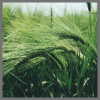
Cattle-fed diets with insufficient forage fiber concentrations may be predisposed to various digestive disorders. It has been suggested that there is a minimal fiber requirement for high-grain diets that is influenced by fermentability of the feed, forage particle size, and grain processing.
Read more
-

May
22
Interpretive Summary: Evaluation of indwelling monitoring technologies for measuring reticulorumen pH in cattle
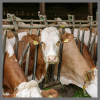
Subacute ruminal acidosis (SARA) is the predominant digestive disorder in feedlot cattle, but the exact timing and ruminal pH parameters associated with SARA are still debated. The need for continuous monitoring of ruminal pH to help define SARA has led to the development of indwelling pH monitoring boli.
Read more
-

May
22
Interpretive Summary: Digestibility of energy and nutrients in soybean expellers produced from conventional or high-oil varieties of soybeans and fed to growing pigs

Recently, a new variety of high-oil soybean patented as PHOTOSEED has been developed, but there are no data for the nutritional value of the de-oiled co-product from this variety. The hypothesis of this experiment was that the digestibility of energy and nutrients in soybean expellers produced from the new variety of high-oil soybeans (SBE-HO) is not different from that of soybean expellers produced from conventional soybeans (SBE-CV).
Read more
-

May
22
Interpretive Summary: Effects of increasing levels of benzoic acid fed to pigs on nitrogen utilization and metabolism affecting growth performance, ammonia emissions, and carcass characteristics
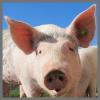
The use of antibiotics as growth promoters has been phased out due to concerns over microbial resistance, creating a demand for alternatives in pig feed. Benzoic acid (BA) has gained attention through its antimicrobial effects in the intestine, potentially improving nitrogen utilization, reducing diarrhea, and ultimately enhancing growth and carcass characteristics in pigs.
Read more
-

May
22
Interpretive Summary: Estrogen promotes autophagy in the mammary epithelial cells of dairy sheep via the CXCL12/CXCR4 axis
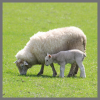
Sheep milk is in increasing demand worldwide for its unique nutrients. Mammary physiological processes and lactation performance are regulated by hormones, and studies have shown that estrogen has the ability to regulate autophagy during mammary development, but the specific mechanism is not clear.
Read more
-

May
22
Interpretive Summary: Effects of omega-3 polyunsaturated fatty acid supplementation to first-calf beef heifers during late gestation on offspring physiology and performance
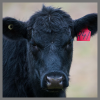
Polyunsaturated fatty acids (PUFA), particularly omega-3 fatty acids, play a crucial role in various body functions related to reproduction, health, and growth in livestock. This study focused on supplementing omega-3 fatty acids to first-calf beef heifers during the last trimester of gestation. The results showed that omega-3 supplementation had a positive impact on immunoglobulin G (IgG) concentration in colostrum and offspring circulation, indicating improved maternal antibody transfer.
Read more
-

May
22
Interpretive Summary: Body reserves dynamics of suckling ewes across successive production cycles under outdoor and indoor contrasting farming system conditions

Body reserves (BR) are vital for ruminants, enabling them to adapt to energy demands during key physiological stages (PhySt) and changing environments. This study assessed how farming systems (FS; indoor vs. outdoor) affect BR dynamics in Romane meat ewes with shared genetics.
Read more
-

May
22
ASAS Foundation Week - Taking Stock - Special Edition - May 22, 2025

ASAS Foundation Week - Taking Stock - Special Edition
May 22, 2025
Read more
 JunInterpretive Summary: Circulating microRNAs associated with immune competence in Angus cattle
JunInterpretive Summary: Circulating microRNAs associated with immune competence in Angus cattle6e470c4d-ea9f-44a9-930b-0fbc61d1fc58.png?sfvrsn=37aa5ad1_1) Immune competence is a measurable trait that was developed to determine the ability of animals to respond to an infection. This trait involves measuring the response to vaccination and has been used in cattle selective breeding programs to ensure that animals maintain an effective ability to control disease, improving animal outcomes and productivity.
Immune competence is a measurable trait that was developed to determine the ability of animals to respond to an infection. This trait involves measuring the response to vaccination and has been used in cattle selective breeding programs to ensure that animals maintain an effective ability to control disease, improving animal outcomes and productivity. JunInterpretive Summary: Effects of clodronate disodium on endocrine regulators of calcium in yearling horses
JunInterpretive Summary: Effects of clodronate disodium on endocrine regulators of calcium in yearling horses73642652-8d76-44e9-a398-1f90d2855ed6.png?sfvrsn=6eaa5ad1_1) Despite limited scientific understanding of the impacts on juvenile horses, extra-label use of bisphosphonates is anecdotally reported to be widespread. This study was conducted to determine the effects of clodronate disodium (CD), a specific bisphosphonate, on hormones associated with blood calcium regulation.
Despite limited scientific understanding of the impacts on juvenile horses, extra-label use of bisphosphonates is anecdotally reported to be widespread. This study was conducted to determine the effects of clodronate disodium (CD), a specific bisphosphonate, on hormones associated with blood calcium regulation. JunInterpretive Summary: Impact of initial postweaning feed intake on weanling piglet metabolism, gut health, and immunity
JunInterpretive Summary: Impact of initial postweaning feed intake on weanling piglet metabolism, gut health, and immunity86e239b6-ca01-461c-a3d6-c70bbf165dc4.png?sfvrsn=a6ab5ad1_1) Individual feed intake observed during the first week postweaning influenced intestinal development and physiology. Weanling pigs were classified as high or low eaters during the first 3 d after weaning and subsequently split into high and low eaters from days 4 to 6, hence, forming four patterns. Overall, piglets with higher feed intake presented a reduced metabolic stress and an activated immune system.
Individual feed intake observed during the first week postweaning influenced intestinal development and physiology. Weanling pigs were classified as high or low eaters during the first 3 d after weaning and subsequently split into high and low eaters from days 4 to 6, hence, forming four patterns. Overall, piglets with higher feed intake presented a reduced metabolic stress and an activated immune system. JunInterpretive Summary: Opportunities to improve environmental sustainability of pork production through genetics
JunInterpretive Summary: Opportunities to improve environmental sustainability of pork production through genetics228a8972-e365-4ec2-92ff-0f17570289d2.png?sfvrsn=50895ad1_1) By increasing productivity and feed efficiency, genetic improvement has led to substantial reductions in the carbon footprint of pork production over the past decades. This review concludes that, other than continuing and accelerating genetic improvement for productivity and efficiency, opportunities to further enhance reductions in the carbon footprint of pork production through genetics are limited when based on traits that are currently routinely collected in breeding programs.
By increasing productivity and feed efficiency, genetic improvement has led to substantial reductions in the carbon footprint of pork production over the past decades. This review concludes that, other than continuing and accelerating genetic improvement for productivity and efficiency, opportunities to further enhance reductions in the carbon footprint of pork production through genetics are limited when based on traits that are currently routinely collected in breeding programs. JunInterpretive Summary: Technologies and practices to improve feed and nutrient utilization by pigs
JunInterpretive Summary: Technologies and practices to improve feed and nutrient utilization by pigs4ee63245-a545-4702-b6bf-0d65db9b7808.png?sfvrsn=73895ad1_1) Improving feed and nutrient utilization of pigs will play a crucial role in helping lead the shift towards increased sustainability in pork production. Nutritional practices such as precision feeding, use of enzymes and feed additives, physical and thermal processing of diets, and reduction in feed wastage, coupled with genetic, health, and barn management improvements, can reduce the environmental impact of pork production.
Improving feed and nutrient utilization of pigs will play a crucial role in helping lead the shift towards increased sustainability in pork production. Nutritional practices such as precision feeding, use of enzymes and feed additives, physical and thermal processing of diets, and reduction in feed wastage, coupled with genetic, health, and barn management improvements, can reduce the environmental impact of pork production. JunInterpretive Summary: Piglet birth weight but not the timing of zinc supplementation in gestation diets affects tissue mineral concentrations and gene expression
JunInterpretive Summary: Piglet birth weight but not the timing of zinc supplementation in gestation diets affects tissue mineral concentrations and gene expression7d50df99-ecaa-40f4-93cb-dbd6ea773488.png?sfvrsn=928a5ad1_1) This research was designed to identify periods during gestation for feeding high zinc that would improve piglet survival and to elucidate how high maternal zinc feeding affects sow and piglet trace mineral levels and gene expression in piglets. Thirty sows were assigned to treatments (10 sows per treatment): 1) Control—sows fed a corn–soybean meal-based diet containing 206 ppm total supplemental zinc; 2) Breed-to-Farrow—as Control + 147 ppm supplemental Zn from 5 days post-breeding to farrowing; and 3) Day 110-to-Farrow—as Control + 4,079 ppm supplemental Zn starting on day 110 of gestation until farrowing.
This research was designed to identify periods during gestation for feeding high zinc that would improve piglet survival and to elucidate how high maternal zinc feeding affects sow and piglet trace mineral levels and gene expression in piglets. Thirty sows were assigned to treatments (10 sows per treatment): 1) Control—sows fed a corn–soybean meal-based diet containing 206 ppm total supplemental zinc; 2) Breed-to-Farrow—as Control + 147 ppm supplemental Zn from 5 days post-breeding to farrowing; and 3) Day 110-to-Farrow—as Control + 4,079 ppm supplemental Zn starting on day 110 of gestation until farrowing. JunInterpretive Summary: Effects of corn protein inclusion on apparent total tract macronutrient digestibility, palatability, and fecal characteristics, microbiota, and metabolites of healthy adult dogs
JunInterpretive Summary: Effects of corn protein inclusion on apparent total tract macronutrient digestibility, palatability, and fecal characteristics, microbiota, and metabolites of healthy adult dogsfe5eb54e-e9b0-4e8c-ba70-bb2c5de41825.png?sfvrsn=ad8a5ad1_1) Corn protein (CP), a co-product of the corn ethanol industry, was evaluated as a protein source in dog foods. The study goals were to determine how CP inclusion affected the apparent total tract digestibility (ATTD) and palatability of dog foods and the health markers of dogs consuming them.
Corn protein (CP), a co-product of the corn ethanol industry, was evaluated as a protein source in dog foods. The study goals were to determine how CP inclusion affected the apparent total tract digestibility (ATTD) and palatability of dog foods and the health markers of dogs consuming them. JunInterpretive Summary: Heat abatement during the pre-weaning period: effects on the nasal microbiota of Holstein male calves
JunInterpretive Summary: Heat abatement during the pre-weaning period: effects on the nasal microbiota of Holstein male calvesf8be4390-5c60-47f5-9031-1cd9a24124d2.png?sfvrsn=cc8a5ad1_1) Strategies to improve housing for pre-weaned dairy calves are gaining attention, especially for reducing the potential impacts of heat stress on their growth and well-being. Researchers have studied how these strategies affect the ability of calves to regulate body temperature, their behavior, and overall performance. The impact of housing on the nasal microbiota, however, remains unexplored.
Strategies to improve housing for pre-weaned dairy calves are gaining attention, especially for reducing the potential impacts of heat stress on their growth and well-being. Researchers have studied how these strategies affect the ability of calves to regulate body temperature, their behavior, and overall performance. The impact of housing on the nasal microbiota, however, remains unexplored. JunInterpretive Summary: Developing a regression equation model to predict individual water intake in Holstein growing cattle using reticulorumen temperature
JunInterpretive Summary: Developing a regression equation model to predict individual water intake in Holstein growing cattle using reticulorumen temperature14ac1bfa-48e5-488c-9a65-7f26f266e8d5.png?sfvrsn=ef8a5ad1_1) Our research looked for a new way of monitoring the water intake of cows which is vital for their health. We used a wireless device called a rumen bolus sensor to monitor the reticulorumen temperatures of cows. We established a regression equation model that could predict how much water a cow drank based on the reticulorumen’s temperature changes.
Our research looked for a new way of monitoring the water intake of cows which is vital for their health. We used a wireless device called a rumen bolus sensor to monitor the reticulorumen temperatures of cows. We established a regression equation model that could predict how much water a cow drank based on the reticulorumen’s temperature changes. MayWashington Roundup – May 2025
MayWashington Roundup – May 2025 President Trump has made it a top priority to pass a Budget Reconciliation package that addresses tax policy as well as a wide variety of other programs, including some traditionally in the Farm Bill. Republicans in Congress are attempting to complete the process before August recess.
President Trump has made it a top priority to pass a Budget Reconciliation package that addresses tax policy as well as a wide variety of other programs, including some traditionally in the Farm Bill. Republicans in Congress are attempting to complete the process before August recess. MayArtificial Intelligence in Animal Science—A Tool for Learning, Farming, and the Future
MayArtificial Intelligence in Animal Science—A Tool for Learning, Farming, and the Future Artificial Intelligence (AI) is rapidly transforming many sectors, and animal science is no exception. From classrooms to cattle operations, AI holds promise for enhancing education, improving efficiency, advancing animal welfare, and supporting sustainability in agriculture. However, its successful integration hinges on thoughtful implementation, ethical use, and a willingness to adapt. The following discussion is guided by a recent Animal Frontiers issue volume 14, Issue 6, December 2024 which elegantly reviewed the topic.
Artificial Intelligence (AI) is rapidly transforming many sectors, and animal science is no exception. From classrooms to cattle operations, AI holds promise for enhancing education, improving efficiency, advancing animal welfare, and supporting sustainability in agriculture. However, its successful integration hinges on thoughtful implementation, ethical use, and a willingness to adapt. The following discussion is guided by a recent Animal Frontiers issue volume 14, Issue 6, December 2024 which elegantly reviewed the topic. MayASAS Foundation Week - Taking Stock - Special Edition - May 23, 2025
MayASAS Foundation Week - Taking Stock - Special Edition - May 23, 2025 ASAS Foundation Week - Taking Stock - Special Edition
ASAS Foundation Week - Taking Stock - Special Edition MayInterpretive Summary: Effect of undigestible neutral detergent fiber concentration in finishing diets containing dry-rolled or steam-rolled barley for feedlot steers
MayInterpretive Summary: Effect of undigestible neutral detergent fiber concentration in finishing diets containing dry-rolled or steam-rolled barley for feedlot steers Cattle-fed diets with insufficient forage fiber concentrations may be predisposed to various digestive disorders. It has been suggested that there is a minimal fiber requirement for high-grain diets that is influenced by fermentability of the feed, forage particle size, and grain processing.
Cattle-fed diets with insufficient forage fiber concentrations may be predisposed to various digestive disorders. It has been suggested that there is a minimal fiber requirement for high-grain diets that is influenced by fermentability of the feed, forage particle size, and grain processing. MayInterpretive Summary: Evaluation of indwelling monitoring technologies for measuring reticulorumen pH in cattle
MayInterpretive Summary: Evaluation of indwelling monitoring technologies for measuring reticulorumen pH in cattle Subacute ruminal acidosis (SARA) is the predominant digestive disorder in feedlot cattle, but the exact timing and ruminal pH parameters associated with SARA are still debated. The need for continuous monitoring of ruminal pH to help define SARA has led to the development of indwelling pH monitoring boli.
Subacute ruminal acidosis (SARA) is the predominant digestive disorder in feedlot cattle, but the exact timing and ruminal pH parameters associated with SARA are still debated. The need for continuous monitoring of ruminal pH to help define SARA has led to the development of indwelling pH monitoring boli. MayInterpretive Summary: Digestibility of energy and nutrients in soybean expellers produced from conventional or high-oil varieties of soybeans and fed to growing pigs
MayInterpretive Summary: Digestibility of energy and nutrients in soybean expellers produced from conventional or high-oil varieties of soybeans and fed to growing pigs Recently, a new variety of high-oil soybean patented as PHOTOSEED has been developed, but there are no data for the nutritional value of the de-oiled co-product from this variety. The hypothesis of this experiment was that the digestibility of energy and nutrients in soybean expellers produced from the new variety of high-oil soybeans (SBE-HO) is not different from that of soybean expellers produced from conventional soybeans (SBE-CV).
Recently, a new variety of high-oil soybean patented as PHOTOSEED has been developed, but there are no data for the nutritional value of the de-oiled co-product from this variety. The hypothesis of this experiment was that the digestibility of energy and nutrients in soybean expellers produced from the new variety of high-oil soybeans (SBE-HO) is not different from that of soybean expellers produced from conventional soybeans (SBE-CV). MayInterpretive Summary: Effects of increasing levels of benzoic acid fed to pigs on nitrogen utilization and metabolism affecting growth performance, ammonia emissions, and carcass characteristics
MayInterpretive Summary: Effects of increasing levels of benzoic acid fed to pigs on nitrogen utilization and metabolism affecting growth performance, ammonia emissions, and carcass characteristics The use of antibiotics as growth promoters has been phased out due to concerns over microbial resistance, creating a demand for alternatives in pig feed. Benzoic acid (BA) has gained attention through its antimicrobial effects in the intestine, potentially improving nitrogen utilization, reducing diarrhea, and ultimately enhancing growth and carcass characteristics in pigs.
The use of antibiotics as growth promoters has been phased out due to concerns over microbial resistance, creating a demand for alternatives in pig feed. Benzoic acid (BA) has gained attention through its antimicrobial effects in the intestine, potentially improving nitrogen utilization, reducing diarrhea, and ultimately enhancing growth and carcass characteristics in pigs. MayInterpretive Summary: Estrogen promotes autophagy in the mammary epithelial cells of dairy sheep via the CXCL12/CXCR4 axis
MayInterpretive Summary: Estrogen promotes autophagy in the mammary epithelial cells of dairy sheep via the CXCL12/CXCR4 axis Sheep milk is in increasing demand worldwide for its unique nutrients. Mammary physiological processes and lactation performance are regulated by hormones, and studies have shown that estrogen has the ability to regulate autophagy during mammary development, but the specific mechanism is not clear.
Sheep milk is in increasing demand worldwide for its unique nutrients. Mammary physiological processes and lactation performance are regulated by hormones, and studies have shown that estrogen has the ability to regulate autophagy during mammary development, but the specific mechanism is not clear. MayInterpretive Summary: Effects of omega-3 polyunsaturated fatty acid supplementation to first-calf beef heifers during late gestation on offspring physiology and performance
MayInterpretive Summary: Effects of omega-3 polyunsaturated fatty acid supplementation to first-calf beef heifers during late gestation on offspring physiology and performance Polyunsaturated fatty acids (PUFA), particularly omega-3 fatty acids, play a crucial role in various body functions related to reproduction, health, and growth in livestock. This study focused on supplementing omega-3 fatty acids to first-calf beef heifers during the last trimester of gestation. The results showed that omega-3 supplementation had a positive impact on immunoglobulin G (IgG) concentration in colostrum and offspring circulation, indicating improved maternal antibody transfer.
Polyunsaturated fatty acids (PUFA), particularly omega-3 fatty acids, play a crucial role in various body functions related to reproduction, health, and growth in livestock. This study focused on supplementing omega-3 fatty acids to first-calf beef heifers during the last trimester of gestation. The results showed that omega-3 supplementation had a positive impact on immunoglobulin G (IgG) concentration in colostrum and offspring circulation, indicating improved maternal antibody transfer. MayInterpretive Summary: Body reserves dynamics of suckling ewes across successive production cycles under outdoor and indoor contrasting farming system conditions
MayInterpretive Summary: Body reserves dynamics of suckling ewes across successive production cycles under outdoor and indoor contrasting farming system conditions Body reserves (BR) are vital for ruminants, enabling them to adapt to energy demands during key physiological stages (PhySt) and changing environments. This study assessed how farming systems (FS; indoor vs. outdoor) affect BR dynamics in Romane meat ewes with shared genetics.
Body reserves (BR) are vital for ruminants, enabling them to adapt to energy demands during key physiological stages (PhySt) and changing environments. This study assessed how farming systems (FS; indoor vs. outdoor) affect BR dynamics in Romane meat ewes with shared genetics. MayASAS Foundation Week - Taking Stock - Special Edition - May 22, 2025
MayASAS Foundation Week - Taking Stock - Special Edition - May 22, 2025 ASAS Foundation Week - Taking Stock - Special Edition
ASAS Foundation Week - Taking Stock - Special Edition



